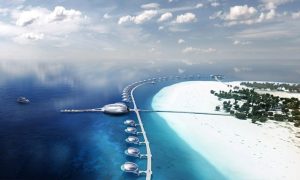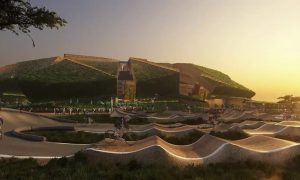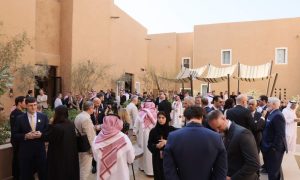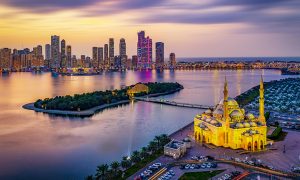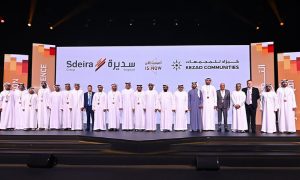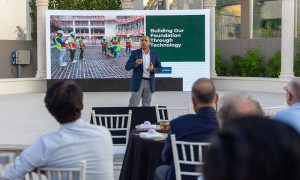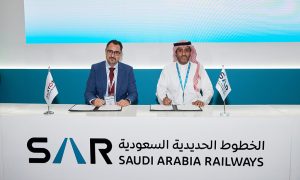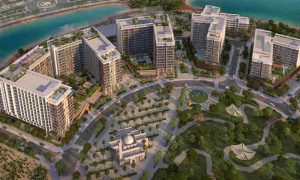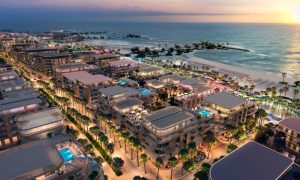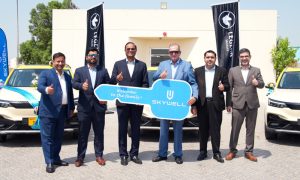The mastermind: Elie Mrad, head of architecture at ARADA
Planning and designing a community from scratch is no small feat. Here, Middle East Consultant speaks to Elie Mrad about Sharjah’s Nasma Residences, architecture and his inspiration

ARADA is one of the UAE’s newest property developers, and is a joint venture between the Basma Group and KBW Investments. The Basma Group was set up in Sharjah in 2005 and is part of Sheikh Sultan bin Ahmed Al Qasimi’s portfolio, while KBW Investments was founded in 2013 by Saudi Arabia’s Prince Khaled bin Alwaleed bin Talal.
The developer opened in Sharjah in January of this year, and now employs 20. But despite its limited time on the market, ARADA is already working on multiple projects, including the five-star, $100m Majlis Grand Mercure Sharjah, the Novotel Sharjah Expo Hotel, and the Nasma Residences community.
Nasma Residences was announced on March 21, and phase one – consisting of 107 units – sold out in less than a month. What’s even more impressive is that the master plan and design went from a blank canvas to launch-ready in just four short months.
“I joined ARADA in January, and immediately started working closely with our CEO. We began addressing and establishing rules and principles, and I think we were quite successful because of that. The design of Nasma Residences took four months, and we’re already in the sales process. It usually takes longer than four months to complete a master plan, but we worked hard and I’m proud of the fact that we came up with all the plans and documents in such a short period of time,” says Elie Mrad, head of Architecture at ARADA.
Mrad was born in Lebanon and says he has “always been interested in architecture”. He earned his bachelor’s degree in Architectural Engineering at Beirut Arab University, and then moved to Australia to complete a master’s degree in Architecture and Urban Design (Dean’s list of honors) at the University of Sydney.
The 40-year-old draws inspiration from the architecture he grew up with in Lebanon, but is also fascinated by European cities. “I always look at the relation between the architecture of buildings and the city, and how the architecture echoes the rich European culture.”
Asked to elaborate on European developments that speak to him, Mrad recalls the new headquarters building for Antwerp’s Port Authority. “The building was designed by Zaha Hadid Architects, and I really enjoy looking at it. The new structure sits on top of an existing heritage building, so you can see the power of the design, as well as the relation and contrast between old and new. The building is also located next to the river, which itself is significant to Antwerp city in terms of logistics and transportation. When you look at this structure and its position next to the river, it’s a very interesting combination, and it makes a statement in terms of how contemporary architecture can mesh with traditional European heritage buildings.”
Architectural Experience
The father of one has a wealth of experience, having previously worked at Dewan Architects & Engineers, Venture International and Kann Finch. He has completed projects in Australia, Africa, Lebanon and across the Middle East.
In the UAE specifically, he has worked on developments in Abu Dhabi, Dubai, Sharjah and Fujairah, and is proud of two projects in particular. The first is Dubai Festival City, a project he worked on while based in Australia, and the second is his current focus, Nasma Residences.
“It’s a nice challenge to work on a residential development in Sharjah. It’s the first project of this type for me, and I tried to deliver a contemporary community by addressing all the requirements that were made by the customer and developer. It was challenging and fulfilling to achieve the design intent,” Mrad says with a smile.
Nasma Residences is a residential community development funded in full by ARADA. The project, when completed, will boast more than 800 villas and townhouses, and will feature a 13-acre destination park, two smaller community parks, a shopping mall, a mosque, a clubhouse, an international school, a nursery and a medical facility. ARADA says it is planning to appoint a contractor in July of this year, and expects work to then begin on the development immediately.
When approaching projects, Mrad has a clear process. “I have a personal statement that explains my design process: complexity is part of my design process, while simplicity is my goal. When I design, it is done with context, and this context is complex due to the factors around us, such as the build environment, the urban fabric, the culture, the weather, in addition to the requirements put forward by the client and authorities. I try to put everything together, reexamine it, restudy it and reinterpret it, and achieve an outcome. This outcome will be an object, either architecture or urban space, and this outcome will be to interface with human beings. That’s why – at the end – it should be a simple outcome. This is the way I look at simplicity and complexity. You can’t reach a simple outcome without going through complexity.”
Mrad also believes regional developments should follow global best practices but remain distinctly regional. “You have to make sure that you have a strong connection between the place and the people. The nature and the build form, understanding the culture, and responding to human needs and the environment are very important things. You have to create something with distinct beauty and identity.”
Master planning Nasma
Speaking about Nasma Residences and his approach to the project, Mrad says he relied on his design process to quickly and thoroughly deliver a solid master plan and design. “We looked at all the components in a complex way, and we addressed everything to ensure the outcome was a contemporary community which addressed local needs. Nasma offers urban parks, which are ideal for serving neighbourhoods. These parks act as the heart for the cluster, and function as a sort of connection between buildings and parks. We have around five or six different types of villas; all of them are different, but in a good way. At the end of the day, it’s a coherent neighbourhood.”
Modern developments are increasingly being developed to provide complete living environments for residents. This allows residents to have more active lifestyles after work hours, while reducing the burden on a city’s transportation network. As a new development, Nasma is designed to be a self-contained community with world-class amenities.
“We will have retail space, medical facilities and a school, so Nasma is a place for couples, families, kids and elder people. We had a lot of challenges and we tried to take all these challenges and build a good design solution. For example, with the land subdivision we had a challenge to achieve the requirements put forward by the authorities, so we came up with a cul-de-sac street topology. This allowed us to turn streets into places that people could actually use beyond just parking their cars,” comments Mrad.
Sustainability is a hot topic in the region as well as globally, and that was indeed a key element in terms of Mrad’s design process for the villas within the development. Nasma offers two-bedroom townhouses, three- and four-bedroom semi-detached villas, and five-bedroom signature villas. All in all, the project boasts a total community size of approximately five million square feet, with approximately 40% of the development earmarked as green space.
Mrad elaborates on the design of the villas: “All the space is important to us, whether it’s a living room, bedroom, kitchen and even the toilet. We focused on making sure the spaces were naturally lit and cleverly ventilated, which means you reduce power consumption in terms of lighting and air conditioning. I’m pleased that we were also able to overachieve in terms of the backyard for the villas. We created more green spaces for each villa, and there’s plenty of green spaces in the urban space of Nasma as well.”
Mrad is also quick to point out that the Middle East is the place to be for architects, thanks to a willingness to experiment and embrace the future.
“I think all the architects that work in the Middle East are quite lucky. It’s the place where you can imagine the future, and it’s a place where developers are not only after creative ideas, but also a future that’s yet to come. From my point of view, imagining a future in architecture is quite important, and it’s already happening here.”
The mastermind behind Nasma Residences wholeheartedly believes that architecture is about more than just style and global practices. “It’s about thinking, and it’s about examining ideas and implementing them. Architecture is now a collaborative thing; as an architect, I work in many dimensions, and there’s nothing quite as exciting as imagining the future.”



